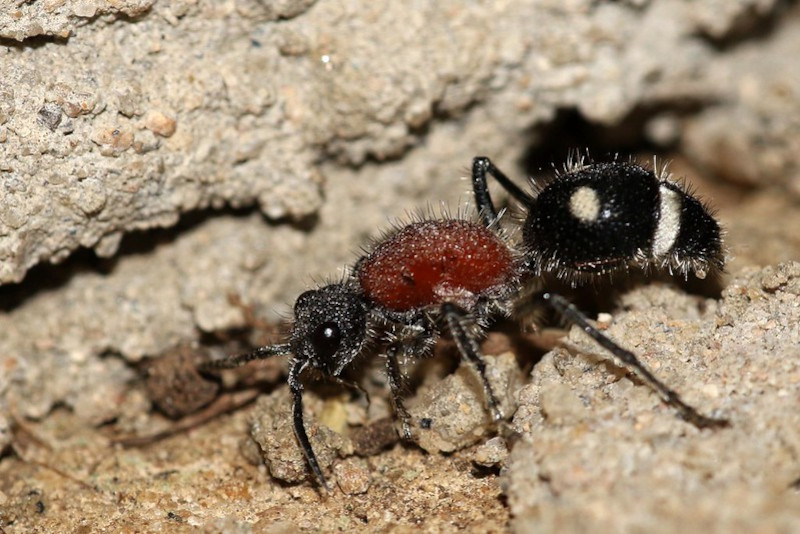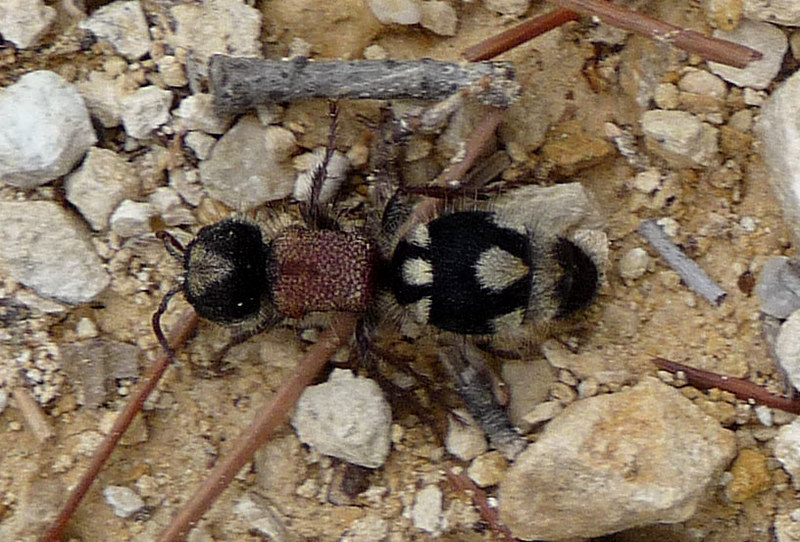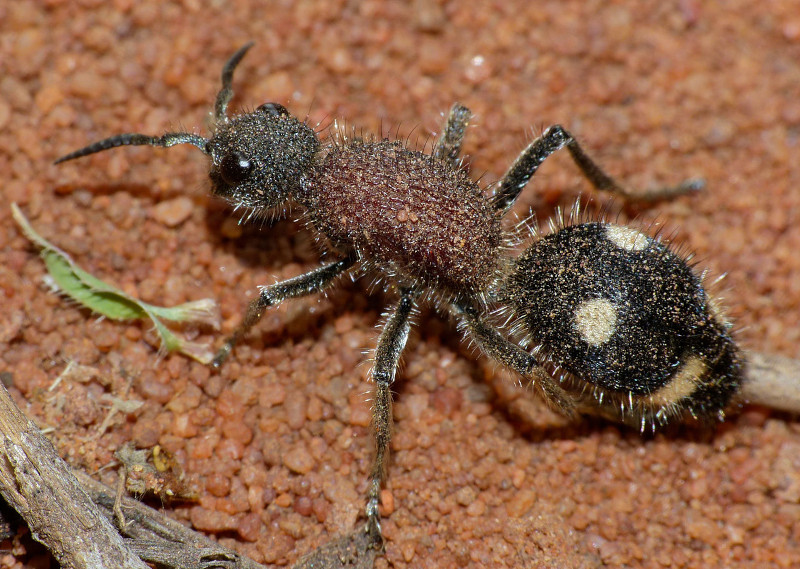The Velvet Ant is the collective term for of any of the more than 3000 species of this insect. Interestingly, they are actually wasps, so neither bees nor ants.
Males and females remain distinctly different in appearance. So great is the difference that the genders are often mistaken for entirely separate species. Nature is amazing.
The term Velvet Ant understandably comes from the appearance of the females. They are wingless and covered in a dense velvety fur.
Velvet Ant Physical Characteristics
The Velvet Ant males are significantly larger than the females – a trait known as sexual dimorphism.
While they grow bigger and have wings males are less dangerous. Though wingless and smaller, the females are capable of inflicting quite painful stings, making them small but tough.
Both genders share one unique trait, with all individuals being covered in a fine but dense and brilliant fur. This comes in a variety of colors which includes bright scarlet or orange, black, white, silver, or gold.
There is even a species that is commonly bright blue in color. No, the below photo is not Photoshopped.
Velvet Ant Habitat and Ecology
The Velvet Ant lives throughout the world, in dry climates. They are especially prevalent in desert areas, being some tough little insects.
This impressive family primarily feeds on nectar. Beneath their fur is an exoskeleton which is extremely strong and durable, making them Beauty and the Beast in one package. That allows them to enter the nests of various ground dwelling bees with impunity. Once there they lay their eggs near the eggs of their victim.
Upon hatching, their larva feeds upon the bee eggs. Their sting is considered quite painful, though they are not actually overtly aggressive by nature. Now that is something to be grateful for.
Check out our articles on Bulldog Ant, Panda Ant, Bullet Ant












Leave a Reply